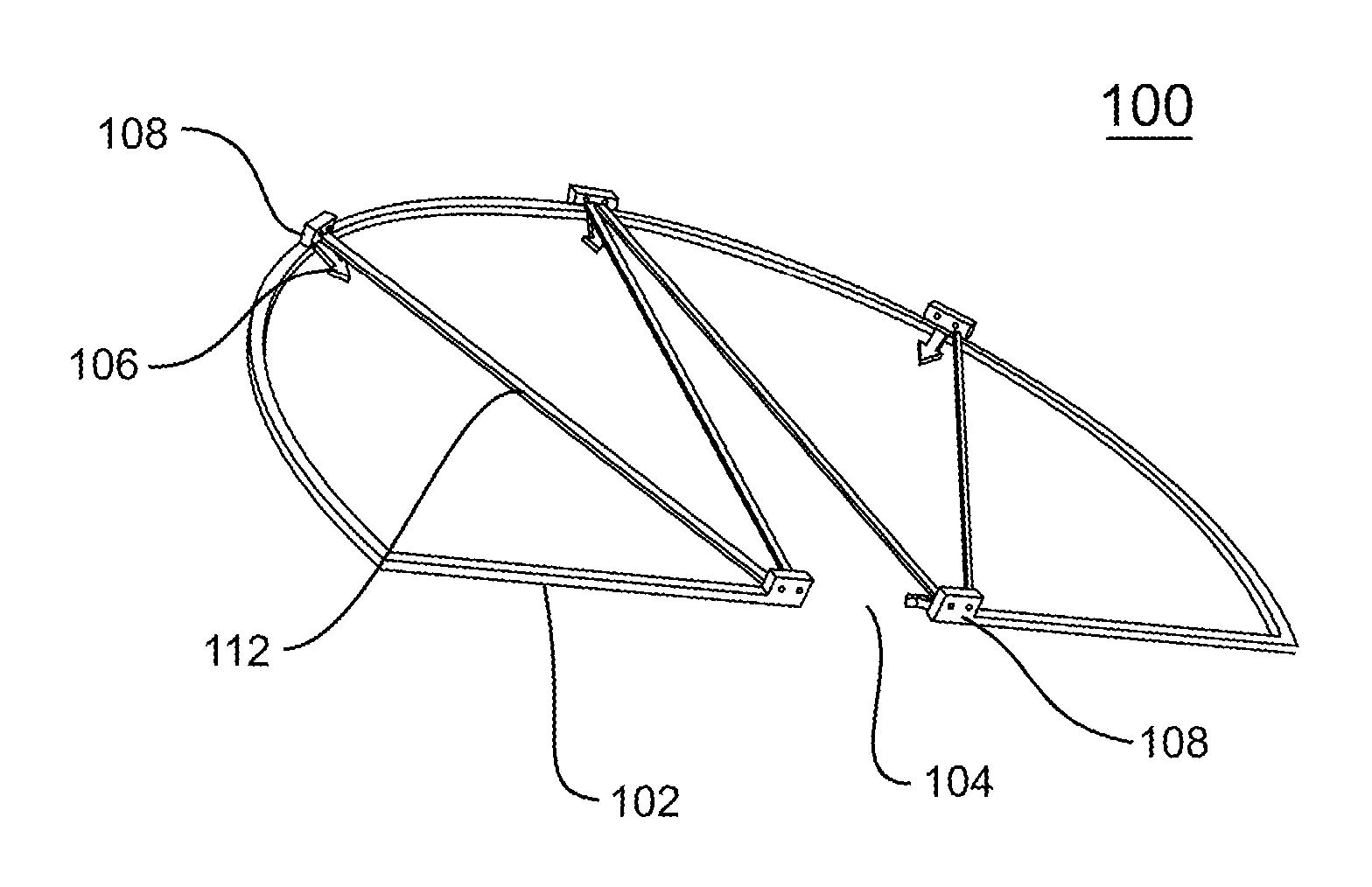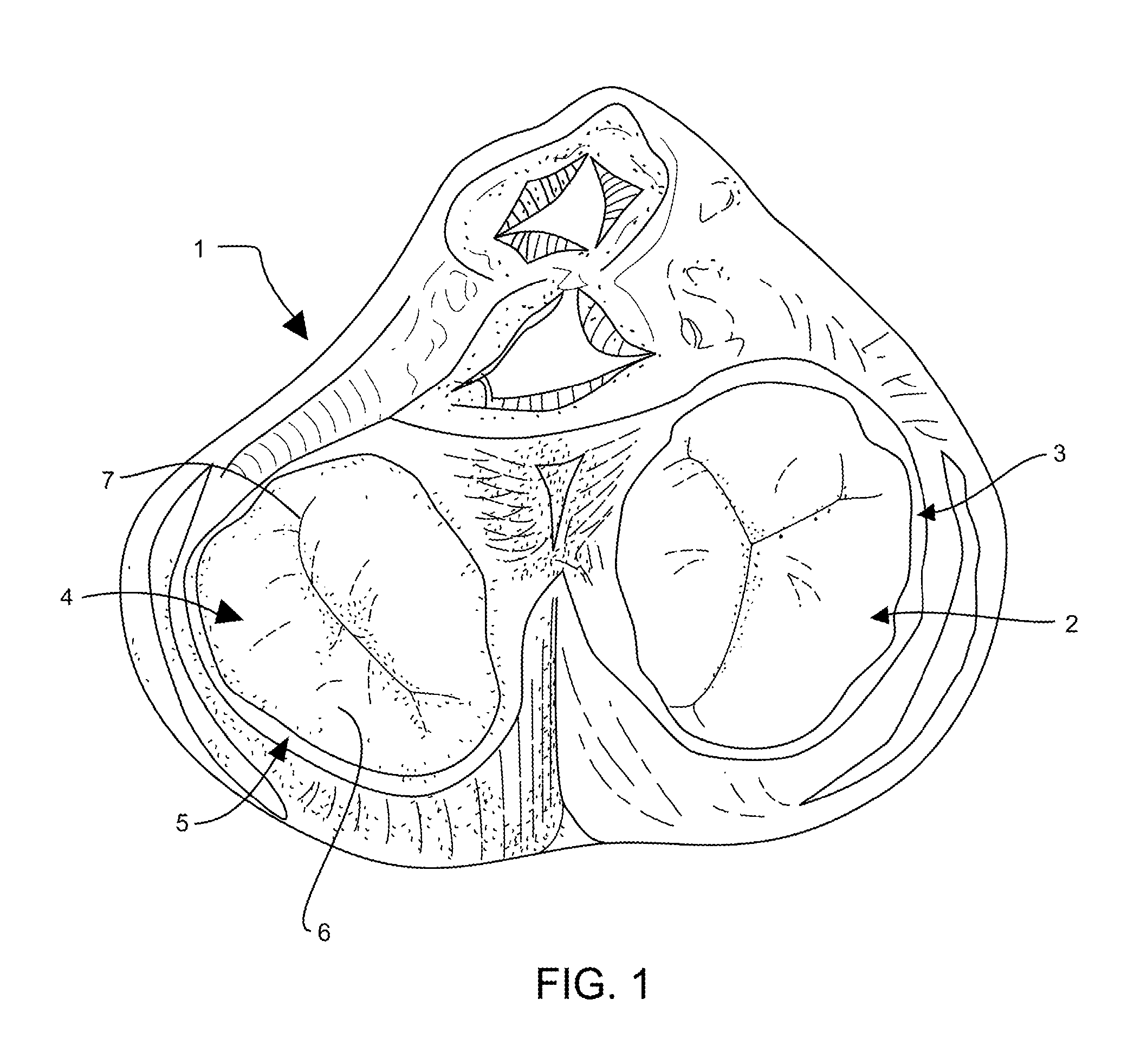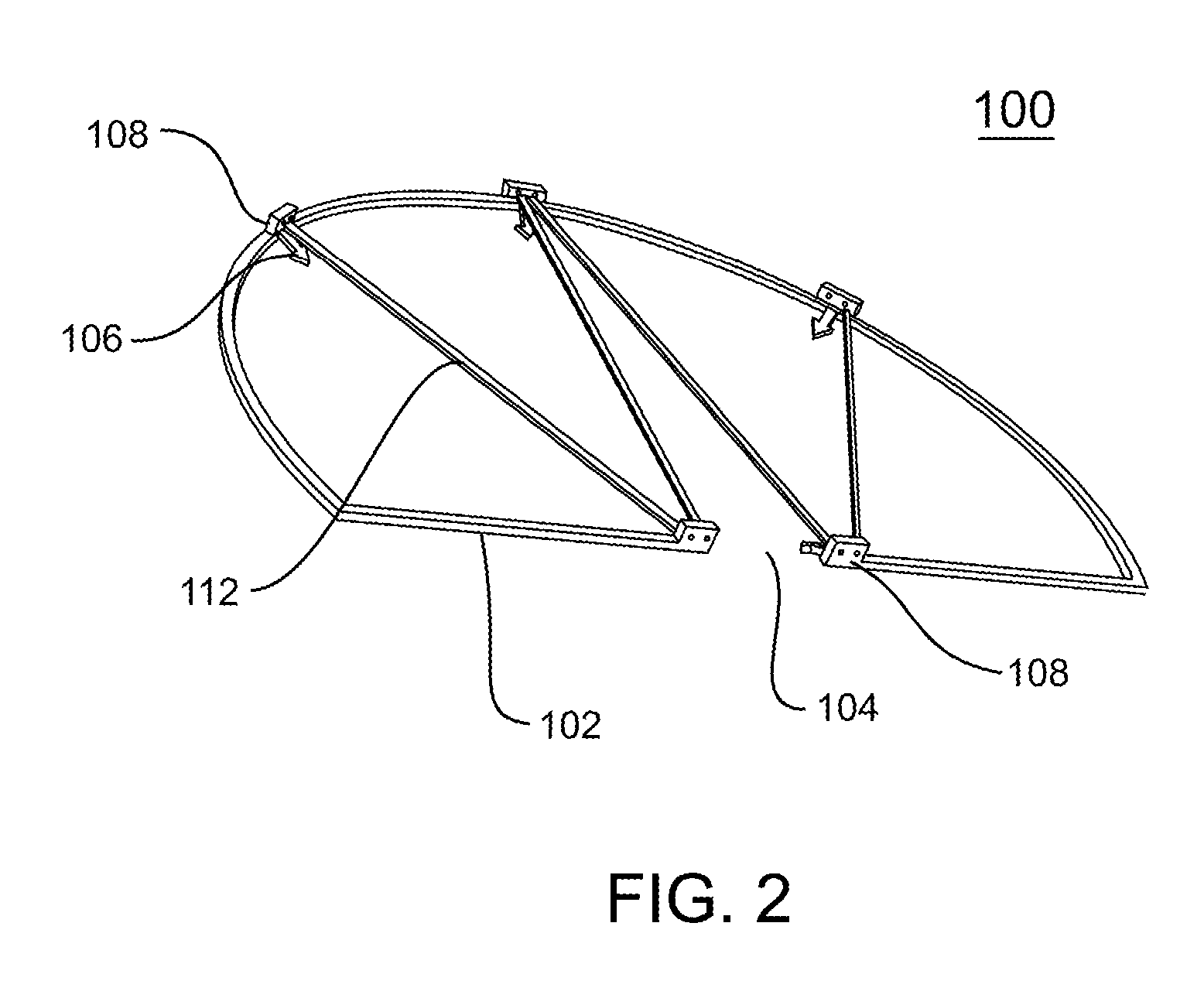Annuloplasty Device Having Shape-Adjusting Tension Filaments
a tension filament and annuloplasty technology, applied in the field of mitral valve regurgitation treatment, can solve the problems of distorting the shape of the mitral valve, reducing the ejection volume of the left ventricle, and allowing the left ventricle to compensate with a larger stroke volume, so as to reduce the regurgitation through the mitral valve
- Summary
- Abstract
- Description
- Claims
- Application Information
AI Technical Summary
Benefits of technology
Problems solved by technology
Method used
Image
Examples
Embodiment Construction
[0022]Throughout this specification, like numbers refer to like structures.
[0023]Referring to the drawings, FIG. 1 shows a cross-sectional view of heart 1 having tricuspid valve 2 and tricuspid valve annulus 3. Mitral valve 4 is adjacent mitral valve annulus 5. Mitral valve 4 is a bicuspid valve having anterior cusp 7 and posterior cusp 6. Anterior cusp 7 and posterior cusp 6 are often referred to, respectively, as the anterior and posterior leaflets.
[0024]Referring to the drawings, FIG. 2 portrays a tensioning device 100 for treating mitral valve regurgitation. Tensioning device 100 includes annuloplasty ring 102. Annuloplasty ring 102 is made of a flexible, biocompatible material that has “shape memory” so that ring 102 can be extended into an elongated configuration and inserted into a delivery catheter, but will re-assume its original shape and dimensions when deployed adjacent to the mitral valve annulus 5. In one embodiment of the invention, flexible ring 102 comprises nitinol...
PUM
 Login to View More
Login to View More Abstract
Description
Claims
Application Information
 Login to View More
Login to View More - R&D
- Intellectual Property
- Life Sciences
- Materials
- Tech Scout
- Unparalleled Data Quality
- Higher Quality Content
- 60% Fewer Hallucinations
Browse by: Latest US Patents, China's latest patents, Technical Efficacy Thesaurus, Application Domain, Technology Topic, Popular Technical Reports.
© 2025 PatSnap. All rights reserved.Legal|Privacy policy|Modern Slavery Act Transparency Statement|Sitemap|About US| Contact US: help@patsnap.com



